Did you know that most of the different languages we speak today can actually be placed in only a couple of groups by their origin? This is what illustrator Minna Sundberg has captured in an elegant infographic of a linguistic tree that reveals some fascinating links between different tongues.
Using the research data from Ethnologue, Minna has used a tree metaphor to illustrate how all major European, and even plenty of Eastern languages can be grouped into Indo-European and Uralic “families”. The whole image is dotted with languages, with bigger leaves representing those with the most native speakers. But even this detailed image doesn’t cover the immense variety of languages out there: “Naturally, most tiny languages didn’t make it on the graph,” the artist explained to io9. “There’s literally hundreds of them in the Indo-European family alone and I could only fit so many on this page, so most sub-1 mil. speaker languages that don’t have the official status somewhere got the cut.”
More info: Minna Sundberg | Print
Bigger leaves represent more people using the language as their native tongue
Here’s a high-resolution image.








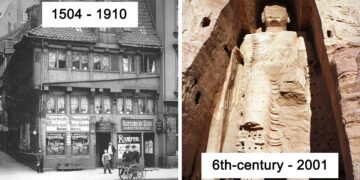








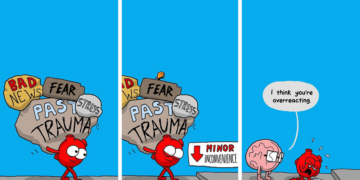















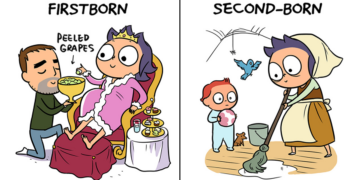

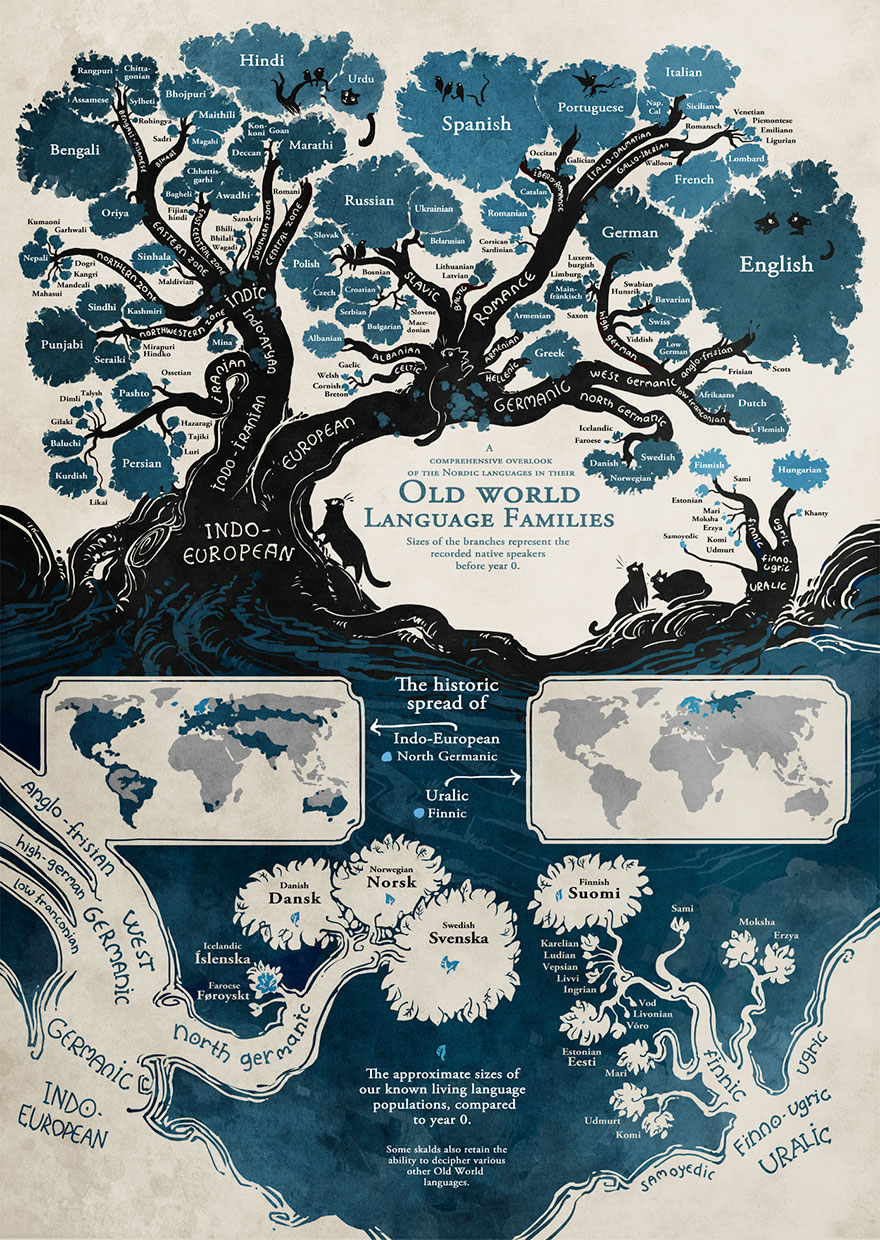
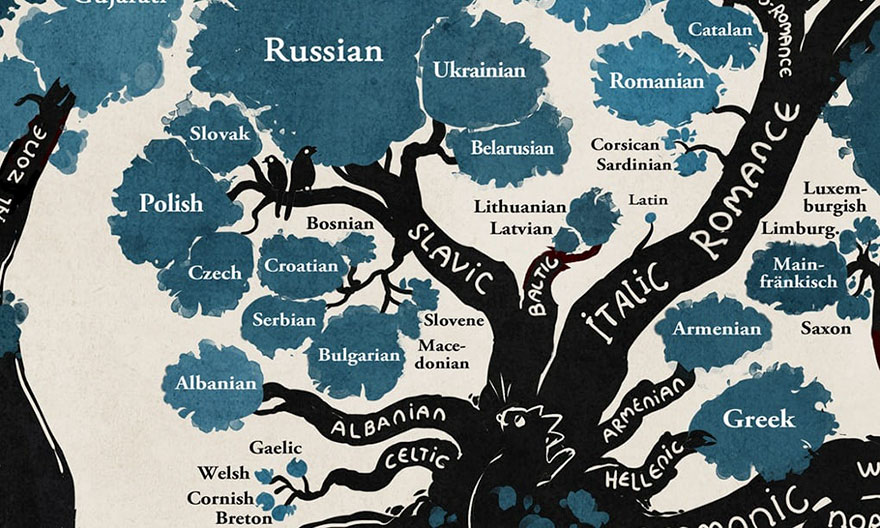
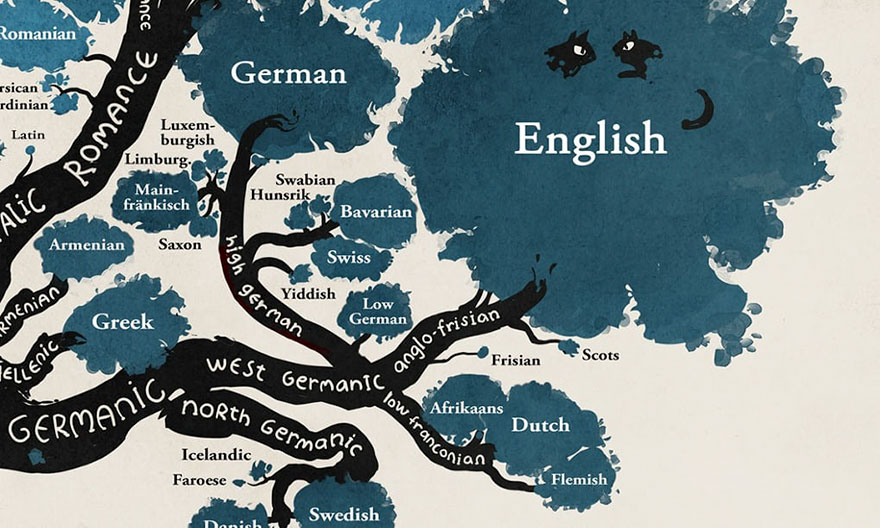
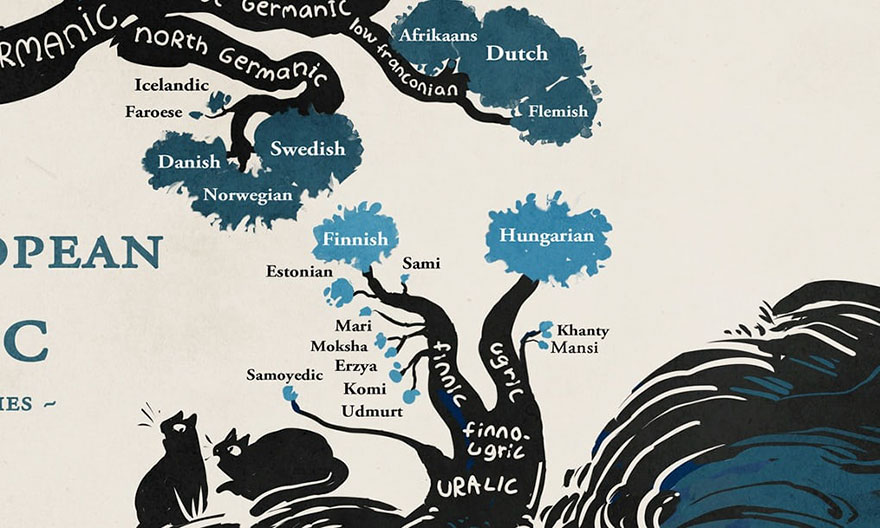
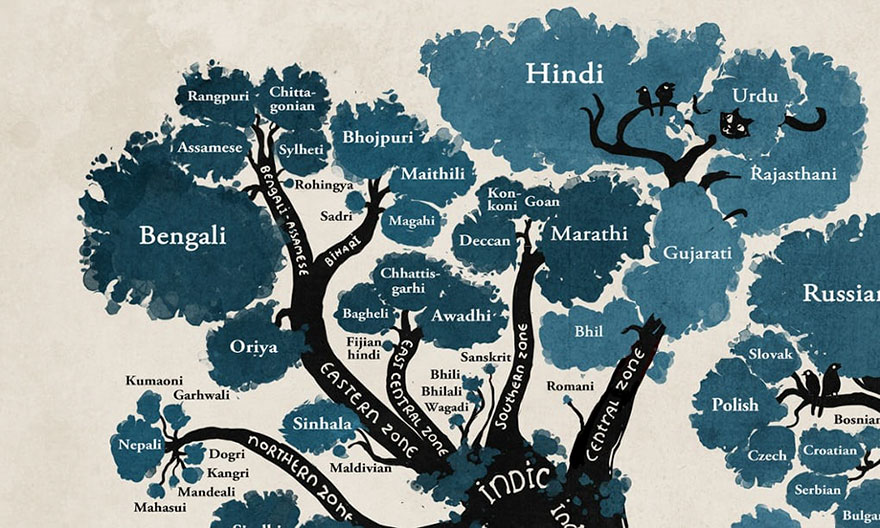








Discussion about this post